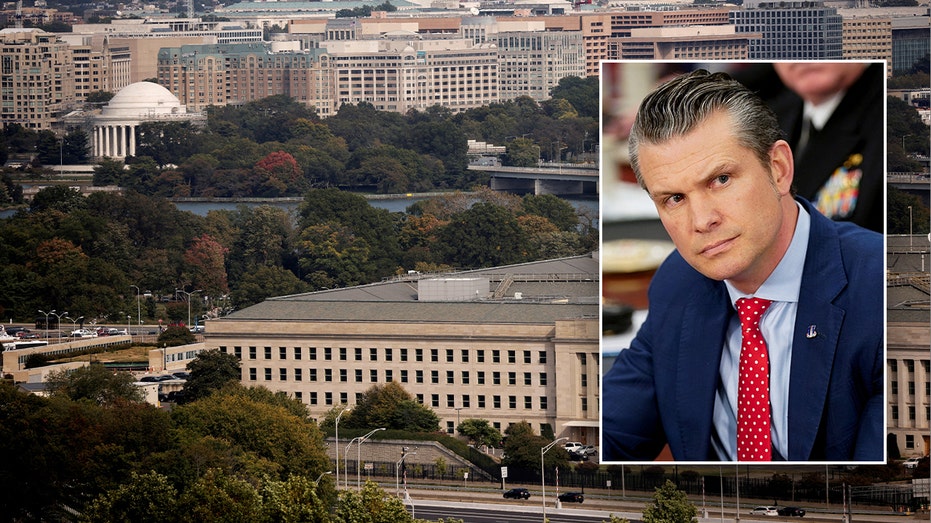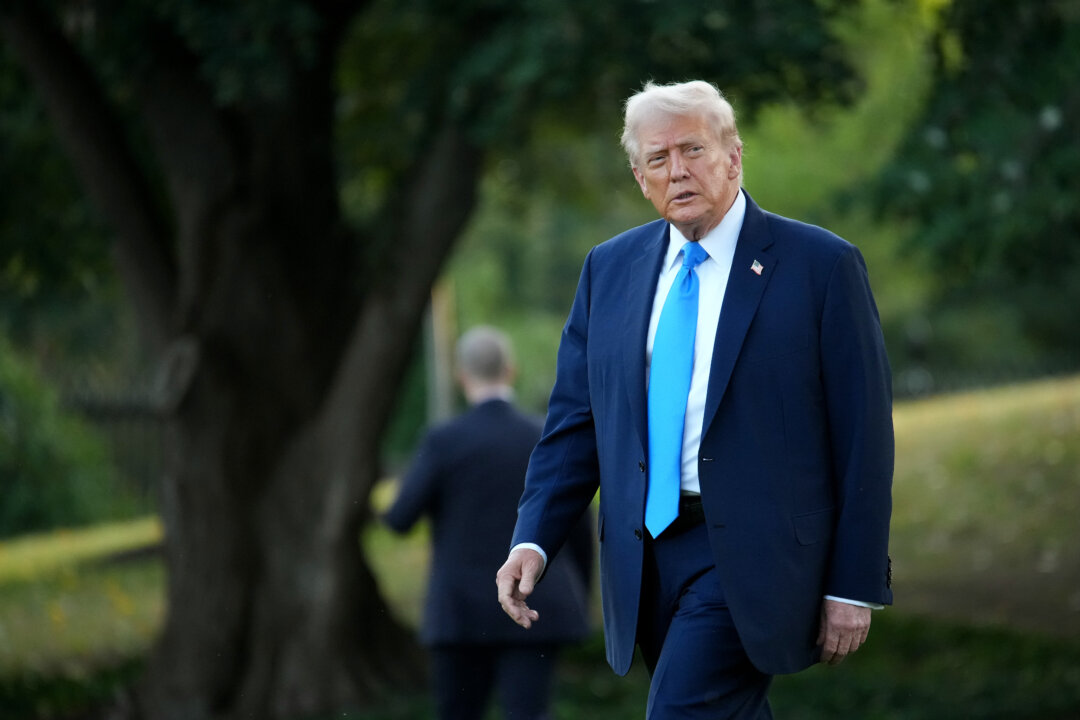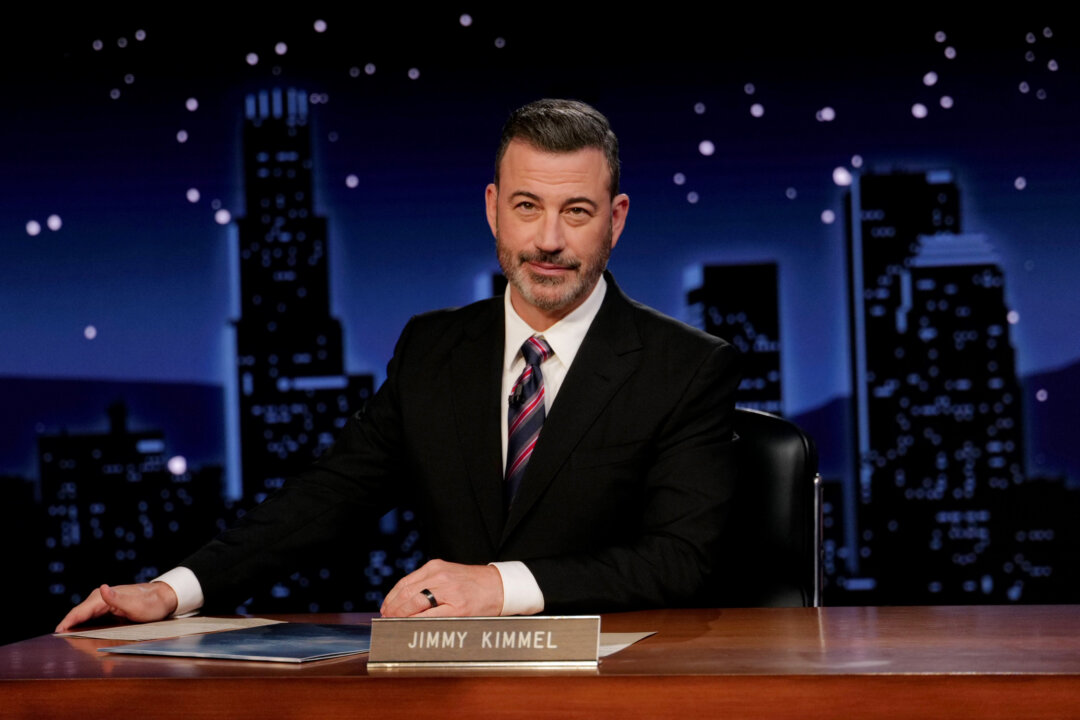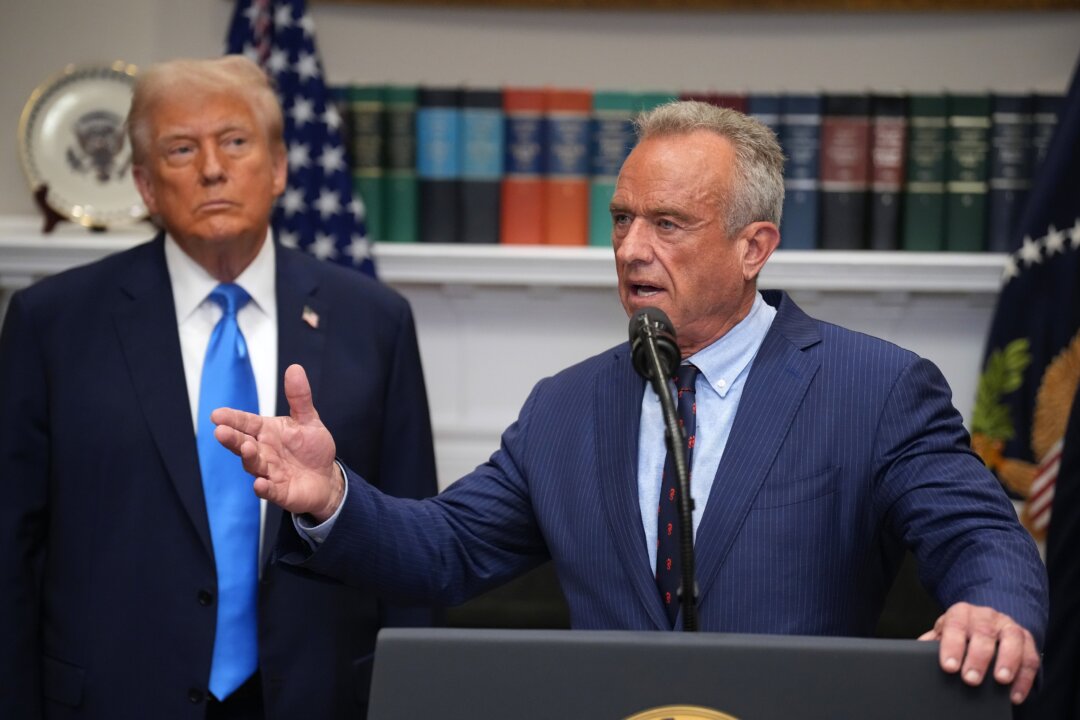The shutdown won’t be livesteamed, with apologies to Gil Scott-Heron. At least not continuously live, as House Minority Leader Hakeem Jeffries promised when he logged on around 2 p.m. yesterday from a drab Capitol office. Instead, there were stops and starts and some tech glitches.
In the earliest hours of the shutdown, Jeffries’ YouTube channel featured a rotating cast of Democratic House members and influencers, from MeidasTouch co-founder Ben Meiselas to progressive Gen Z political YouTuber Jack Cocchiarella to Carlos Eduardo Espina, who has 13.3 million followers on TikTok. Their mission: to win the shutdown messaging battle. It did not go off without a hitch. In fact, there were many hitches. At times, just a few dozen viewers were watching the YouTube stream, making it an almost instant joke among Republicans and a source of embarrassment among Democrats — even if some Democrats admitted it was, technically, a smart thing to do, if a failure of execution.
I binged more than 14 hours of the occasionally awkward, repetitive — if mostly on message — programming on YouTube (there was also an X stream). “Does your editor not like you,” a House Democratic campaign official texted me when I explained to them this assignment. (I granted anonymity to Democrat and Republican insideres alike so they could speak candidly.) But even if it was a physically exhausting and mentally taxing process, it was a revealing window into the Democrats’ larger plight: a struggle to get their message through in an attention economy that prizes watchability and entertainment, making it almost impossible for them to break through the din of President Donald Trump’s neverending newscycle.
“Trump is gonna do something crazy as soon as the go[vernment] shuts down and that’ll be the story,” lamented one House Democratic aide.
The party in power historically loses the shutdown. But no party in power has had a leader with a megaphone likeTrump does now.
In launching the livestream, which featured the feel of a throwback telethon with none of the charisma or surprise, Jeffries and his allies seemed to tacitly acknowledge that they needed to be fighting, and sounding and looking as if they were. (“Y’all, I ain’t scared,” Jeffries said at one point. “I’m from Brooklyn.”) But few Dems seemed willing to fight on camera. The livestream featured just four frontline Democrats of 26 in competitive districts — and few of the party’s brightest stars like AOC or Jasmine Crockett — a possible tell that they see some risk here. (Rep. Sarah McBride, the 35-year-old from Delaware, did join briefly at the beginning.) Notably, Democrats could not field live programming for three hours in the middle of the night, from 2:30 a.m. to 5:30 a.m., despite an internal email desperately seeking participants. (A spokesperson for Jeffries declined to comment on the three hours of recorded re-run content). And it showed that while Democrats are clearly listening to a lot of people online urging them to fight, a lot of people online may not be listening to them.
“If you are using that as the centerpiece of your messaging strategy, certainly a little bit more needs to go into it than kind of just like putting it together at the last minute,” said Cocchiarella, the progressive political YouTuber with more than a million subscribers, who stumbled into being a last-minute guest on the livestream while on the Hill. (“Oh,” Cocchiarella said, looking surprised when the camera panned to him sitting with Rep. Jamie Raskin of Maryland, “I think we’re on.”)
Republicans and the White House almost instantly mocked the livestream. The National Republican Congressional Committee regularly posted to X how few people were watching. White House Communications Director Steven Cheung noted on X that @WhiteHouse was “schlonging Democrats on the viewer count.” At the time, the White House had more than 100,000 viewers, though later in the evening Democrats said some 35,000 people tuned into watch Jeffries.
But onYouTube, Democrats peaked at around 1,000 viewers. The White House, meanwhile, had begun livestreaming a roughly 3-minute clip of various congressional Democrats speaking out against previous shutdowns that dwarfed Jeffries’ viewers. “We’re absolutely smoking them, for lack of a better term, on YouTube and across the board,” a White House official told me Wednesday, adding facetiously, “we were also working to get Democrats exposure as well.”
Cocchiarella took Republican criticism in stride. “Although they're kind of poking fun and saying the viewership isn't that high, they’re still talking about the fact that Democrats are making the case of why this shutdown is a Republican problem,” he told me later.
House Democrats also got hit from the left, as the Sen. Bernie Sanders-led livestream of Senate Democrats on the shutdown scored some 90,000 viewers in real time, racking up 357,311 views by Wednesday morning. To be fair, creators clipped the livestream and distributed portions across X and other social media views, some of which drew tens of thousands of views, far more than the livestream itself.
“There are Democrats who are attracting more eyeballs and enthusiasm,” Rebecca Katz, the founding partner at Fight Agency and an adviser to New York City mayoral contender Zohran Mamdani, told me as she fumed at how few viewers Jeffries was landing. “The problem is party leadership is shunning many of them.”
In a statement to POLITICO Magazine, a spokesperson for Jeffries said his three separate livestreams on X generated over 60,000 views and that “clips from the livestream are continuing to also generate hundreds of thousands of views and we still have more coming.”
“As Leader Jeffries has consistently said and done, Democrats are in a more-is-more environment,” said Christie Stephenson, Jeffries’ spokesperson. “Apparently for some, that means more is more snark and that’s their choice as to how they want to spend this pivotal moment. While Republicans canceled votes, vacationed and fundraised at steakhouses, Democratic Members of Congress, stakeholders and everyday Americans united to define the stakes of the Republican healthcare crisis and the Trump shutdown.”
Here, in excerpts from the livestream, Democrats spent their online air time swapping candy from Hawaii, troubleshooting tech issues and searching for ways to attract attention during the shutdown’s earlier hours.
2 p.m.: Aside from a countdown clock, the walkup to the first government shutdown to be live-streamed — quasi-continuously — isn’t the exciting fare you might think: It’s two guys sitting in leather chairs with microphones.
“Good afternoon, everybody,” says Jeffries, appearing on a livestream in front of a podcast mic, an American flag draped behind him. He was sitting next to Rep. Maxwell Frost (D-Fla.), whom Jeffries hails as “one of the rising stars of the United States Congress.”
Jeffries makes a bold promise: “Over the next 24 hours, House Democrats here on the Capitol, across the city and beyond, will be talking directly with the American people about what’s at stake, why we are fighting hard to make sure that we both find a path forward to fund the government but that we do it in a way that actually makes a difference in the quality of life of the American people.”
Ben Meiselas of MeidasTouch, the popular YouTube streamer, beams into the conversation in a split screen. “American citizens are going to die,” he intones, “because of the shutdown and Affordable Healthcare Act tax credits expiring.
Frost adds, “Trump is going to try and blame everyone but himself.”
3:26 p.m.: The camera feed switches to a different location, where we watch four members of the Congressional Asian Pacific American Caucus sitting around a table featuring a pineapple centerpiece and what appears to be a Labubu, theübertrendy Chinese plush toy. There's Rep. Grace Meng (D-NY), Rep. Mark Takano (D-Calif.), Rep. Jill Tokuda (D-Hawaii) and Rep. Ted Lieu (D-Calif).
"They're going to have to choose between having health coverage for their family, health insurance for their family, or paying for the food," Takano says.
“As Jill said, it’s almost Halloween,” Meng announces a few minutes later, motioning to the pineapple. “While we are swallowing these bitter pills, Jill was kind enough to bring some treats.”
“There’s tricks and there’s treats,” says Tokuda, picking up the pineapple. She passes out candy.
4:53 p.m.: On X, some national Democrats are starting to admit the livestreaming isn’t working in their favor. “I am once again begging Democrats to be curious about candidates who can attract more people into the process,” strategist Rebecca Katz posts.
6:14 p.m.: A group of House Democrats assemble outside the Capitol behind a lectern with a placard that reads: “Healthcare over Billionaires.” Rep. Greg Casar, the populist from Texas, steps to the microphone. “These House Democrats are ready for a fight for an America that workers can afford, an America that is not run by the billionaire class, an America where healthcare is a basic right.”
6:26 p.m.: It is former Speaker Nancy Pelosi's turn at the mic, with a statement that pretty much summed up the Democratic identity crisis: “The antidote to all ailments is to win elections,” she says.
6:57 p.m.: It is darkening in DC. Jeffries pops back into the livestream, this time on the podium with other Democrats gathered outside the Capitol.
“Y’all, I ain’t scared,” Jeffries says, evoking his hip-hop past, when as a high schooler going by the moniker “Kid Fresh,” he nurtured dreams of a rap career. “I’m from Brooklyn. We get down like Shirley Chisholm: unbought and unbossed at all times.” Then he invokes a Jay-Z lyric dating back to 2003: “So Mr. President, allow me to reintroduce myself: I’m the House Democratic Leader. The House Democratic caucus is 217 members strong.”
But for most of the evening, not even that many people are watching the stream.
6:47 p.m.: A national Democratic operative texts me of Jeffries: “If he had been doing this and building this for years, it would be smart(er). The problem is they don’t know what they’re doing when they try to attract attention.”
8:45 p.m.: White House Communications Director Steven Cheung posts to X that the “@WhiteHouse is schlonging Democrats on the viewer count.” The accompanying screenshot showed more than 100,00 people watching the White House’s livestream of Democrats making derogatory remarks about government shutdowns in the past over a screenshot of Democrats garnering just 224 views.
9:55 p.m.: “What is next?” Don Lemon, the former CNN host turned independent creator, asks Rep. Ayanna Pressley (D-Mass.). “How can the people watching — what can they do?”
Just 122 people are watching.
9:59 p.m.: A national Republican operative points out to me that no Democratic frontliners have yet appeared on the livestream so far. That doesn’t hold, though. Rep. Mike Levin of California, Rep. Jahana Hayes of Connecticut and Rep. Gabe Vasquez of New Mexico will join in the wee hours of Wednesday morning.
10:00 p.m.: Lemon asks Pressley: “Is there anything that would give folks hope that you could say?” Pressley says, “Yeah. Ummm…” while looking up and to the right, apparently stalling for time.
“What gives me hope,” she says finally, “is that each and everyone of you — honestly, it’s why I carry your stories with me and I’ll continue to amplify them — but I know that there is strength and power in numbers, and solidarity and we just have to continue to lean into that.”
She’s talking to 151 people.
10:12 p.m.: A national Democratic digital strategist who’s following the livestreaming texts me: “Are the metrics embarrassing? Yes. But the bar is in Hell, at least they’re trying.”
Meanwhile, Neera Tanden, the president for the Center For American Progress is live-streaming in triptych boxes with Rep. James Walkinshaw and Rep. Suhas Subramanyam, both of Virginia. "I want to return to the fact House Republicans haven't been like anywhere to be seen for days and days and days," she says. "Not even willing to be in Washington. Who knows what they're all doing?" Walkinshaw nods. Subramanyam looks ahead.
Just 144 people are watching.
10:38 pm.: Rep. Eric Swalwell joined the influencer A.B Burns-Tucker and 156 viewers. Swalwell wore a “No Kings” hat.
11:17 p.m.: Maxwell Frost is back. “Gen-Z is in the house,” says. Rep. Debbie Wasserman Schultz (D-Fla.) Frost raises his eyebrows and smirks.
“People are really encouraged to see this fight we are putting up,” Frost says to 171 people.
11:57: Rep. Bennie Thompson of Mississippi is talking to Rep. Troy Carter of Louisiana. “What the Republicans are doing to the least of these is what we call in my neck of the woods a sin and a shame,” he says.
166 people are watching.
12:01 p.m.: The government is now shut down for the first time since 2019.
A gray, red and white screen appears on the livestream, as it has throughout during intermissions. The soundtrack: Strumming guitars and a bopping synthesized track accompanied by the sound of chirping birds. It’s the kind of track you might play to get yourself amped for a good day at work — but perhaps not one that includes a shutdown during which 750,000 federal employees would be furloughed.
12:11: a.m.: Who were the other anonymous 126 people still listening to this music and watching this blank screen, I wonder? Were they regular Americans? Members of the Washington press corp? Staffers? Are they also awaiting a DoorDash delivery of Wingstop to ride out the next interminable hours? Previously, in the lower right hand corner, there had been a countdown clock ticking away the minutes to shutdown. Now the clock was counting up, measuring the seconds, minutes, hours, of the shutdown.
12:12: a.m.: Four House Democrats materialize on screen in Brady Bunch-like boxes: Reps. Sydney Kamlager-Dove of California, Yvette Clarke of New York, Gabe Amo of Rhode Island and Jennifer McClellan of Virginia.
“This is at the heart of our humanity,” says Clarke, “having access to healthcare.”
They look tired. Worn out, but earnest.
1:00 a.m.: Rep. Steven Horsford of Nevada, the first frontline Democrat to appear on the livestream — though in the dead of night — is winding down his shift. “This is about taking this directly to the people,” he says. “To get out of the mainstream box, and to make sure that we are communicating and connecting directly to where the people are.” Some 120 of them are watching.
1:04 a.m.: Jeffries is back, looking a little weary. “I’m still here in the United States Capitol,” he says, “because Democrats are ready, willing and able to do the job that’s necessary in order to reopen the government and pass a funding agreement that actually meets the needs of the American people.
Of the livestream, Jeffries affirms his intention to broadcast “for 24 consecutive hours,” adding that he wants to "continue to get the information to the American people” and promising to get his message out in a “variety of different ways.”
The livestream abruptly cuts him off.
1:32 a.m. The livestream is back up. I am one of 25 souls on this pale blue dot hurtling through the Milky Way at approximately 514,000 miles per hour who was also still watching Jeffries livestream on YouTube. (A Jeffries spokesperson later provides an X screenshot of about 35,000 viewers watching at this time.)
What’s gone wrong for me, I wonder, and how far back in time do I need to travel to fix it?
2:30 a.m.: The livestream reverts to earlier recorded programming. It remains that way until approximately 5:30 a.m.
6:36 a.m.: Clarke logs back in, talking to Carter of Louisiana – or trying to.
“I can’t hear anything, can you hear me?” Carter says.
“I can hear you, Troy,” Clarke responds.
She adds, “We’re going to get that audio fixed. This is a livestream.”
I wonder if maybe I’m the only person listening.
.png)














 English (US)
English (US)